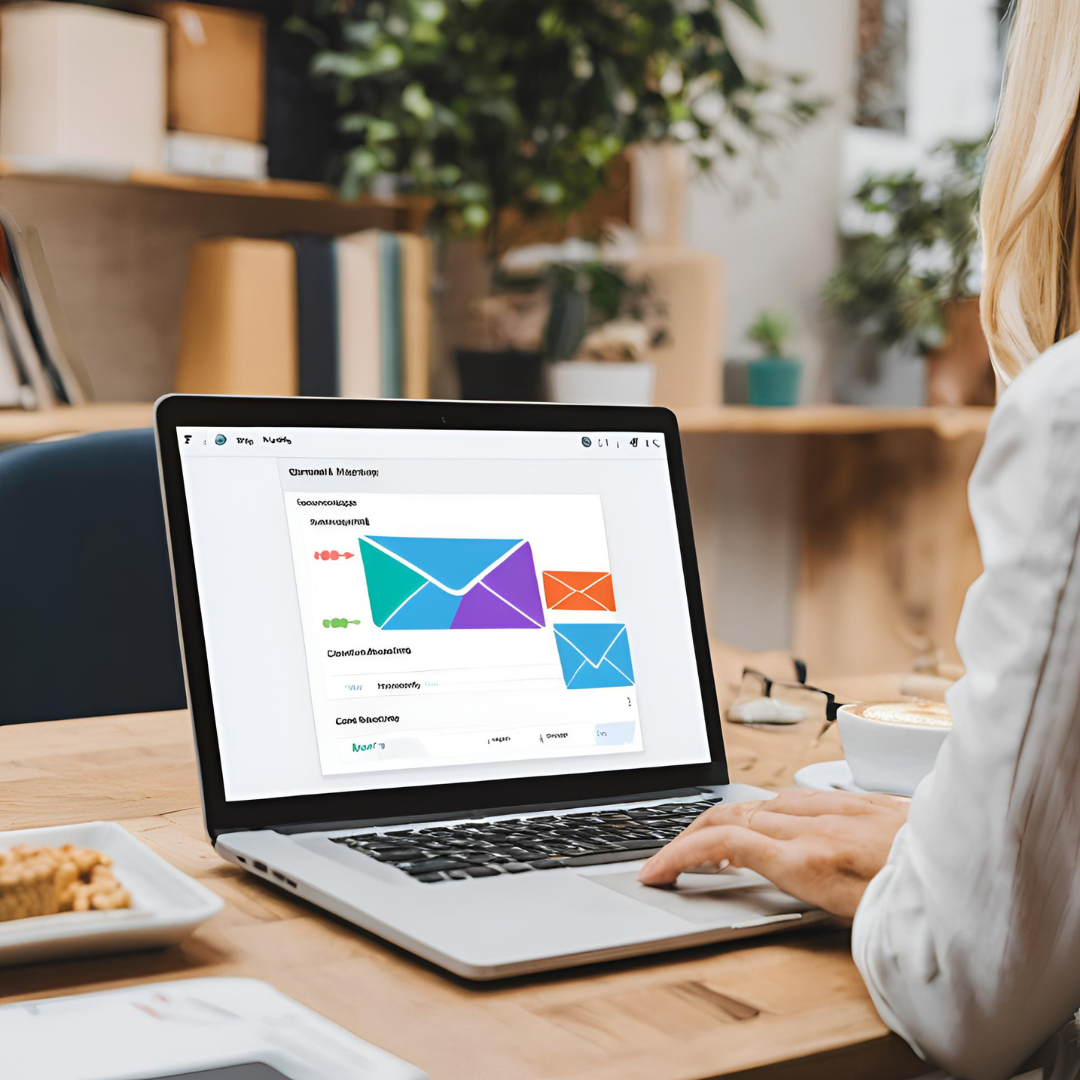Email marketing is a potent tool for engagement in the cutthroat world of digital marketing, where brands are fighting for consumers' attention. Sending generic emails is no longer sufficient, though, since consumer expectations are rising and inboxes are overflowing. Businesses need to use data analytics to tailor their email messages in order to draw in customers and generate meaningful engagement. This strategy increases conversion rates, strengthens client loyalty, and improves relevance. In order to maximize your email marketing efforts, this blog will examine methods, resources, and best practices for leveraging data analytics to drive email personalization.
1. The Critical Role of Email Personalization
Email customization is an essential component of successful email marketing, not just a fad. This is the reason it's crucial:
1.1 Enhanced Engagement
Compared to generic emails, personalized ones are much more engaging. Personalized email content increases open rates by 29% and click-through rates by 41%, according to research. This is due to the fact that recipients respond well to personalized emails and are therefore more inclined to interact with them.
1.2 Improved Customer Experience
For the recipient, personalization contributes to a more relevant and customized experience. Businesses can greatly improve their customers' overall experience by making them feel valued and understood by catering to their unique requirements and preferences.
1.3 Increased Conversion Rates
Higher conversion rates are generally the result of personalized communications. A recipient is more likely to complete the intended action—making a purchase, registering for an event, or interacting with more content—when the content is personalized to fit their interests and habits.
2. Gathering and Analyzing Customer Data
Robust data gathering and analysis is the first step toward effective email personalization. Businesses can use data analytics to drive email personalization in the following ways:
2.1 Key Data Sources for Personalization
2.1.1 Demographic Data
Information on age, gender, location, and occupation is included under the category of demographic data. With the aid of this fundamental data, you can segment your email list and customize content according to broad attributes. For example, age and gender can be used to help create offers that are tailored to particular demographics.
2.1.2 Behavioral Data
Purchase history, email correspondence, and surfing history are all examples of behavioral data. Businesses can uncover trends and preferences through this data analysis, enabling more accurate and pertinent customisation. For example, you can customize email recommendations based on how often a consumer browses products in a specific category.
2.1.3 Transactional Data
Details about previous transactions or purchases are included in transactional data. For the purposes of upselling, cross-selling, and follow-up communications, this information is priceless. For instance, a buyer who just purchased a smartphone might be considering extended warranties or accessories.
2.1.4 Engagement Data
Metrics like open rates, click-through rates, and the amount of time spent reading emails are examples of engagement statistics. Understanding how recipients interact with your emails and what material they find most interesting comes from analyzing this data.
2.2 Tools for Data Analytics
Several tools and platforms can assist in analyzing data for email personalization:
2.2.1 Customer Relationship Management (CRM) Systems
CRM programs that store and analyze customer data, such as Salesforce, HubSpot, and Zoho, offer insights into interactions, behavior, and preferences. Having this information is essential for developing targeted email marketing.
2.2.2 Email Marketing Platforms
Advanced analytics tools are available on email marketing systems like Klaviyo, Constant Contact, and Mailchimp, which monitor user interactions and email performance. These tools are capable of optimizing email content, analyzing engagement, and segmenting audiences.
2.2.3 Web Analytics Tools
Web analytics programs, such as Google Analytics, monitor user activity on your website and reveal information about how users engage with your material. Email content and strategy can be informed by this data.
2.2.4 Data Visualization Tools
Complex data sets can be interpreted with the use of data visualization tools such as Tableau, Power BI, and Google Data Studio. They facilitate the process of spotting patterns and trends that can guide email customization tactics.
3. Effective Email List Segmentation
The foundation of email personalization is segmentation. You may deliver more individualized and relevant messages by segmenting your email list. Here's how to divide up your list efficiently:
3.1 Demographic Segmentation
Demographic segmentation is the process of breaking up your list according to characteristics such as geography, gender, or age. This enables you to customize material for particular audiences. For instance, you can target material depending on location or send various promos to viewers who are younger or older.
3.2 Behavioral Segmentation
Using behavioral segmentation, you can separate your list according to previous purchases or browsing activity. This enables you to send communications that are specifically tailored to each person's interests and behavior. You could contact a user about vacation packages or travel advice, for instance, if they regularly view articles about travel.
3.3 Purchase History Segmentation
Sort your list according to previous purchasing patterns. Make sections for customers who have abandoned their cart, for once-time shoppers, and for regular consumers. Adapt your emails to meet their particular requirements. For example, email a special offer to a regular customer or a reminder to someone who left their cart unattended.
3.4 Engagement-Based Segmentation
Based on how receivers respond to your emails, segment your audience. For instance, make categories for subscribers who have recently interacted with your emails, inactive subscribers, and highly engaged subscribers. Customize your content to reward and re-engage highly engaged subscribers or re-engage inactive ones.
4. Crafting Personalized Content Using Data Insights
Making content that appeals to your audience is the next step after gathering and evaluating your data. Here's how you create engaging email content using data insights:
4.1 Dynamic Content
You can alter email components according to recipient information by using dynamic content. For example, you can present various offers or product recommendations according to a recipient's previous actions. This guarantees that the content sent to each recipient is pertinent to them.
4.2 Personalized Subject Lines
Email open rates are significantly influenced by subject lines. Depending on recipient information, customized subject lines can have a big influence on interaction. A subject line like "John, Check Out Your Exclusive Offer on Sports Gear" is more interesting than one that is generic.
4.3 Tailored Recommendations
Utilize browsing and purchase history to deliver tailored product suggestions. Send emails highlighting the newest models of running shoes or related accessories, for instance, to a customer who purchases shoes on a regular basis.
4.4 Customized Offers and Discounts
Offer customized discounts or promotions based on the behavior and past purchases of the customer. Give a customer who recently made a purchase but hasn't shopped again, for instance, a special discount.
4.5 Relevant Content and Resources
Offer pertinent content that fits the recipient's interests and past brand encounters, such as blog entries, manuals, or tutorials. Send recipes or cooking advice, for instance, if the receiver has expressed an interest in cooking.
5. Implementing A/B Testing for Continuous Improvement
Split testing, often known as A/B testing, compares two versions of an email to see which works better. This technique is essential for optimizing personalization tactics and raising overall effectiveness.
5.1 Testing Personalization Elements
Experiment with various aspects of personalization, including offers, dynamic content, and subject lines. Try different tailored subject line variants, for instance, to see which increases open rates.
5.2 Analyzing Test Results
Utilize data analytics to assess your A/B test results. Analyze performance indicators like as open, click-through, and conversion rates to find out which version was more successful.
5.3 Iterating Based on Insights
Utilize A/B testing results to improve email customization tactics. To raise engagement and conversion rates over time, test and refine various components frequently.
Conclusion
A potent tactic for raising conversion rates, increasing engagement, and improving customer experience is to use data analytics to drive email personalization. Businesses can develop extremely impactful and targeted email campaigns by collecting and analyzing client data, using smart segmentation, creating personalized content, and continuously optimizing through A/B testing. The efficiency of your email marketing campaigns will be further increased by protecting data privacy and incorporating personalization with other marketing channels. By keeping up with new developments in technology and trends, you may continuously improve your tactics and keep a competitive advantage. Adopting data-driven personalization is a commitment to providing your customers with an enhanced and more relevant experience, which will ultimately lead to long-term success, rather than just a plan.





Leave a Reply